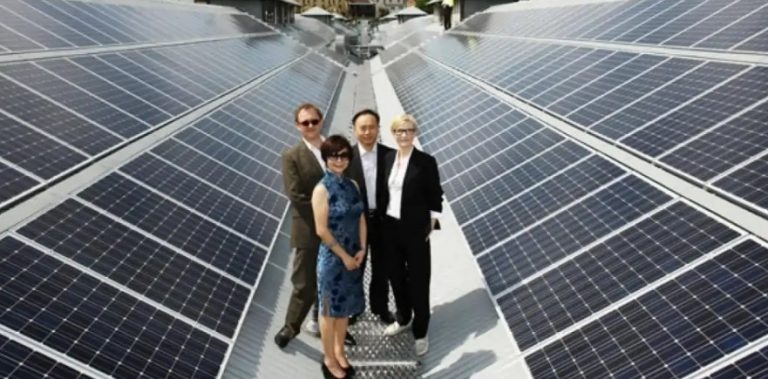Rising “British gas prices” have highlighted how energy usage varies between different types of homes. Understanding how energy consumption differs from small flats to big houses can help individuals make informed decisions about their energy habits and costs. This article explores these differences and offers insights on effectively managing and reducing energy bills.

Comparing Energy Usage of Small Flats vs. Big Houses
Energy consumption varies significantly between small flats and big houses. A small flat uses around 2,000 kWh of electricity annually, whereas a larger house might use 4,600 kWh or more. Similarly, gas consumption shows a notable difference; a small flat typically consumes about 7,000 kWh annually, while a large house can use upwards of 18,000 kWh. These differences are largely due to the space size that needs heating, cooling, and lighting.
In small flats, household energy usage is naturally lower because there is less space to maintain. The average energy use per household in flats is significantly lower because of fewer rooms and smaller living spaces. This means fewer lights, appliances, and heating or cooling needs. In contrast, larger homes have more rooms, often leading to higher household average energy usage due to more lighting, appliances, and space to heat or cool.
Factors Influencing Household Energy Usage
- Heating and Cooling Needs
Heating and cooling are two of the most significant factors affecting energy consumption. Maintaining a comfortable temperature in a big house requires more energy.
Central heating systems in larger homes use more gas, while air conditioning systems consume more electricity. This is evident in the average power usage figures, where larger homes use more gas and electricity.
- Appliances and Electronics
Larger homes often have more appliances and electronics. Each additional appliance contributes to the overall energy consumption.
For instance, big houses might have multiple refrigerators, larger televisions, and additional computers, which increase electricity usage. In contrast, smaller flats usually have fewer and smaller appliances, resulting in lower average electricity usage.
Energy Usage Comparison
Consider two examples to understand better how much energy different homes use. A small flat with a single occupant might have lower bills due to minimal lighting needs, a single refrigerator, and perhaps only one television. This leads to a lower gas and electric bill, often less than £60 per month.
On the other hand, a family living in a big house with several rooms, multiple occupants, and various appliances might see their energy bills soar. Heating multiple bedrooms, running several televisions, and using various kitchen appliances can significantly increase gas and electricity usage. Their monthly energy bill could easily exceed £200.
Reducing Household Energy Consumption Costs
Improving Energy Efficiency
Regardless of the size of your home, improving energy efficiency can help reduce household energy costs.
Simple measures like using energy-efficient light bulbs, insulating walls and roofs, and upgrading to energy-efficient appliances can significantly reduce average energy consumption per household. For example, switching to LED bulbs can reduce electricity usage for lighting by up to 80%.
Smart Thermostats and Energy Monitors
Installing smart thermostats and energy monitors can also make a big difference. These devices help regulate heating and cooling more efficiently, ensuring energy is not wasted when it is not needed.
Smart thermostats can learn your schedule and adjust temperatures automatically, leading to substantial gas and electricity bill savings.
The Role of Energy Providers and Suppliers
- Choosing the Right Energy Provider
Energy providers play a crucial role in household energy usage. Choosing an energy supplier with competitive rates and favourable terms can help reduce your overall energy costs. Some energy suppliers offer fixed-rate plans that protect customers from fluctuations in energy prices, providing stability and potentially lowering bills.
- Direct Debit Discounts
Many suppliers offer discounts for customers who pay their bills via direct debit. This payment method ensures your bills are paid on time and can result in significant savings over the year. It’s worth checking with your provider to see if they offer such discounts.

Environmental Impact and Carbon Footprint
Reducing Your Carbon Emission
Reducing household energy usage isn’t just about saving money; it also positively impacts the environment. Lower energy consumption means a reduced carbon emission.
For instance, using less electricity reduces the demand on power plants, many of which burn fossil fuels, thus lowering greenhouse gas emissions.
Sustainable Practices
Sustainable practices like solar panels can reduce energy consumption and carbon emissions.
Solar panels generate electricity from sunlight, which can significantly cut down your reliance on traditional energy sources. This not only lowers your electricity bills but also supports a greener planet.
Practical Tips to Save Money on Energy Bills
Regular maintenance of heating and cooling systems ensures they operate efficiently.
- Dirty filters, for example, can make systems work harder, increasing energy consumption. Simple tasks like cleaning filters and servicing your HVAC system can yield substantial savings.
- Adopting energy-saving habits can also help reduce your bills. Turning off lights when not in use, unplugging devices that are not in use, and washing clothes in cold water are simple habits that can significantly impact your average power consumption. Read about more tips here.
Final Words
Understanding the differences in usage between small flats and big houses can help homeowners make informed decisions about managing their energy consumption, including how much electricity they will need.
With rising British gas prices, being mindful of how much energy is used and reducing household energy costs can lead to substantial savings and a smaller carbon emission. Adopting energy-efficient practices and choosing the right suppliers are key strategies for achieving these goals.
The post From Small Flats to Big Houses: How Energy Usage Compares appeared first on Barnorama.






















0 Comments